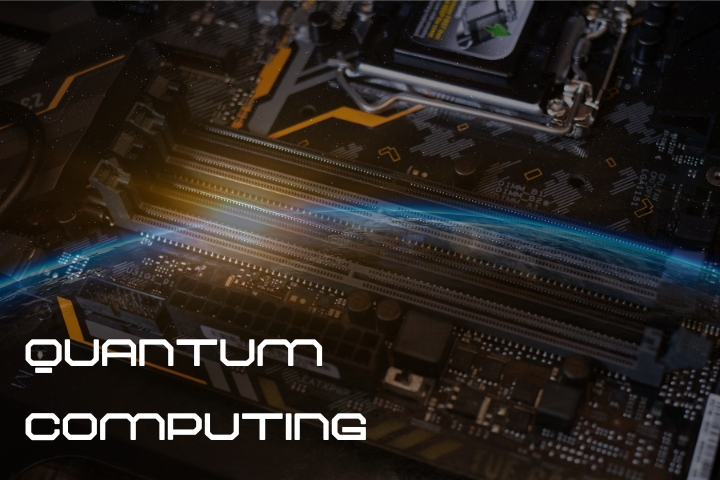The advent of 5G technology heralds a new era in connectivity, promising to reshape the way we interact with the digital world. With its lightning-fast speeds, minimal latency, and unwavering reliability, 5G has positioned itself as a game-changer, set to unlock a plethora of opportunities. One domain that stands to benefit immensely from this transformation is the Internet of Things (IoT).
- Unveiling 5G: A Technological Marvel
- 5G and IoT: A Symbiotic Relationship
- 5G in Action: Real-world Applications
- The Future of Connectivity and IoT
- Conclusion:
-
1. Unveiling 5G: A Technological Marvel
5G, the fifth generation of cellular network technology, is poised to revolutionize our digital landscape. Unlike its predecessor, 4G, which mainly focused on connecting people, 5G goes a step further. It’s engineered to seamlessly connect devices, creating a world where everything from smart home appliances to industrial sensors becomes part of an intricate web of connectivity.
One of the most striking attributes of 5G is its remarkable speed. It offers a quantum leap over 4G, which is critical for applications demanding real-time data transfer. Consider self-driving cars navigating busy streets or surgeons performing remote surgeries. With 5G, the delay in data transmission is virtually nonexistent, making these scenarios not only feasible but also safer and more efficient.
In addition to speed, 5G promises more robust and reliable connections. This is essential for applications operating in challenging environments, such as industrial automation and smart agriculture. These sectors demand connectivity that remains steadfast even amidst adverse conditions, ensuring that processes remain uninterrupted.
Perhaps one of the most crucial advancements brought about by 5G is its superior capacity. Compared to 4G, 5G can handle a significantly higher number of devices simultaneously connected to the network. This capacity expansion is paramount for IoT, given the exponential growth in the number of connected devices expected in the near future. From smart homes to smart cities, 5G paves the way for a world where every device can communicate seamlessly.
-
2.5G and IoT: A Symbiotic Relationship
Now, let’s delve into the ways in which 5G is poised to reshape the landscape of IoT:
- · Speeding up the Future with Real-time Data Transfer: The speed of 5G is a game-changer for IoT. Imagine a self-driving car navigating through a bustling city. With 5G, it can instantly communicate with traffic signals, other vehicles, and even pedestrians. This real-time data exchange is crucial for ensuring the safety and efficiency of autonomous vehicles.
- · Uninterrupted Operations in Any Environment: Whether it’s an industrial automation system in a factory or a smart agriculture setup in remote farmlands, 5G’s reliability ensures that IoT applications remain operational even in harsh conditions. This resilience is essential for industries that rely on IoT to streamline their processes.
- · The IoT Explosion: As IoT continues its exponential growth, 5G’s expanded capacity becomes indispensable. It allows for the simultaneous connection of countless devices, ensuring that the IoT ecosystem can expand without limitations. From smart refrigerators in our homes to sensors monitoring critical infrastructure, 5G can accommodate them all.
- · Pioneering New Possibilities: 5G isn’t just an upgrade; it’s a catalyst for innovation. It unlocks new possibilities previously considered unattainable with 4G. Think of self-driving cars communicating seamlessly, remote medical devices performing intricate surgeries, and industrial robots collaborating with humans. These scenarios become reality with 5G, redefining the boundaries of IoT.
-
3.5G in Action: Real-world Applications
The transformative power of 5G is already being harnessed in several real-world applications:
- · Smart Cities: The concept of smart cities, where IoT technology enhances efficiency, sustainability, and the quality of life, is becoming a reality. 5G connects traffic sensors to manage congestion, streetlights for energy efficiency, and environmental monitoring devices to maintain a clean and safe urban environment.
- · Industrial Automation: Factories and manufacturing facilities are increasingly embracing 5G to automate their processes. Robots, sensors, and machinery are interconnected, optimizing production, improving quality, and reducing human intervention.
- · Healthcare: In the healthcare sector, 5G is enabling remote patient monitoring and even remote surgeries. Wearable devices connected through 5G can monitor patients’ vital signs from afar, providing real-time data to healthcare professionals.
- · Agriculture: 5G is revolutionizing agriculture by monitoring crop health and managing irrigation systems. Soil moisture and temperature sensors, connected via 5G, provide data that farmers can use to optimize their yields and conserve resources.
-
4.The Future of Connectivity and IoT
The evolution of 5G and its integration with IoT is an exhilarating journey. While we are still in the early stages, the future holds great promise. The marriage of these two technologies has the potential to redefine our way of life, from how we work and play to how our cities operate.
-
5. Conclusion
In conclusion, 5G isn’t just an upgrade to our current network infrastructure; it’s a revolution in the making. Its impact on IoT is profound, enabling faster, more reliable, and more expansive connectivity. As 5G continues to evolve, brace yourself for a world where connectivity knows no bounds, and IoT becomes an integral part of our daily lives. The future, it seems, is wireless, and it’s here to stay.
Thank You for reading a our blog. Follow us on Medium for regular updates

